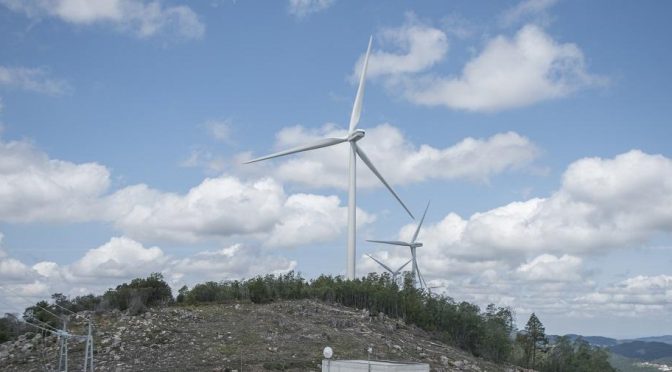In 2022, the Maicao and Uribia wind farms that the Portuguese EDP Renováveis will build will be in operation. In 2022, the Maicao and Uribia wind farms that the Portuguese EDP Renováveis will build will be in operation.
The second decade of the 21st century will be crucial for wind power and solar energy in Colombia. Although these sources are not expected to replace hydraulic generation, the arrival of large investments will completely change the country’s matrix and energy map.
Until a few years ago, solar or wind energy did not appear in the plans of most governments because of its high cost. Now, with innovation and the massification of these wind turbines, there seems to be no going back.
Other countries in Latin America, such as Brazil and Mexico, already have several of these wind farms. In the Colombian case, the national government awarded last year through auction 7 of these projects, with an investment of more than $ 7 billion.
In 2022, the Maicao and Uribia wind farms that the Portuguese EDP Renováveis will build will be in operation.
EDP, a Portuguese multinational with a presence in 14 markets, won two of these contracts through its renewable business subsidiary, EDPR.
This is the Alpha wind farms, which will generate 212 MW and Beta of 280 MW. These developments will be located in Maicao and Uribia and should start operating in 2022, after an investment of US $ 500 million.
EDPR will train local personnel for the assembly, operation and maintenance of wind turbines.
“In the last 4 or 5 years, wind energy has become cheaper due to technological advances and the massification of parks of this type. The same happened with solar energy, which until a while ago was more expensive, almost a luxury, ”João Manso Neto, CEO of EDP Renováveis, told Dinero.
The manager was a week ago in Bogotá to refine details of the works in La Guajira and meet with businessmen from the sector and the high government.
The top manager of EDPR said that the company already has environmental licenses and is in the process of designing and building the networks that will drive the energy generated by these ‘windmills’ of the 21st century. “We still haven’t decided how many turbines or what kind, but we’re in that,” he said.
The arrival of wind energy in the country does not mean that hydroelectric generation (dams) will disappear. The national government plans to diversify the energy matrix, that is, not to depend on a single type of generation and promote the entry of new sources.
And there are several reasons to diversify. One of them is that climate change has modified the cycles of rainfall, so it is more difficult to guarantee water at certain times or control excesses in others. It can rain a lot a season (La Niña phenomenon) or experience endless droughts (El Niño phenomenon).
We must also bear in mind that other sources of generation today are in the eye of the hurricane. In the case of coal, because of the environmental cost it represents and that of gas, because national production is in decline, to the point that it would have to be imported since 2024.
In contrast, in regions of the country such as La Guajira it is possible to take advantage of both the sun and the strong winds of the afternoon and evening, an ideal complement.
Not even a country so voracious in energy consumption and prolific in the production of electricity and fuels such as oil, gas and coal, like the United States, has escaped the boom of the wind turbine and solar panel.
Manso Neto points out that the greatest expansion and growth of clean energy parks is taking place – paradoxically – during the term of Donald Trump and in one of his political forts, Indiana. “In that state the development in this type of generations is very great in recent years,” he said. Nor can politics curb the winds of change in terms of generation.
Will the bills go down?
The entry into operation of these renewable systems will not necessarily result in lower rates.
The energy market will have some changes derived from applying energy efficiency programs in the residential sector (lower consumption by technology in light bulbs or refrigeration and intelligent measurement) and self-generation programs in the industry. However, the kilowatt value will surely be maintained, because production costs will not have substantial changes.
The positive point of all this is that the country will have security and reliability in the provision of electric power service, as there are more sources of generation.
In addition, the entry of these parks will be good news before the emergence of the Hidroituango project, which delayed its entry, scheduled for December 2018 (it would do so at the end of 2021). In addition, there are no new large-scale water generation initiatives in the list of projects. That’s why new winds blow.
After new opportunities
The CEO of EDPR, João Manso Neto, told Dinero that the European company is attentive to other business opportunities in the country, although it did not specify in which regions it is evaluating investment. The interest would go beyond wind farms. Colombia is also an attractive market for the generation of photovoltaic (solar) energy due to the geographical location that allows for a greater amount of sun hours per year. However, this type of development should be carried out – preferably – near the places where demand is generated, that is, of urban centers. Manso Neto also did not rule out that EDP, the Portuguese parent company for energy generation and distribution, shows interest in the offers that the national government would open this 2020 for Electricaribe. However, he clarified that the priority for this firm will be to develop wind or solar projects. “You can’t do everything,” he said. EDP ??is one of the main electrical groups in Europe, and the largest in Portugal.


